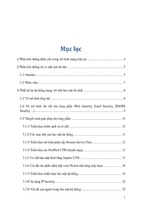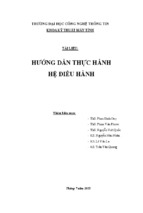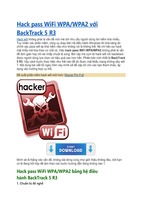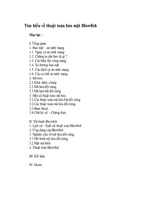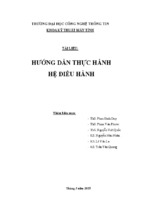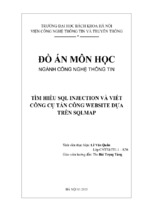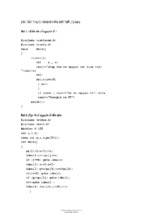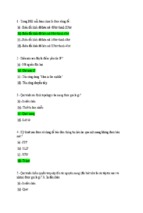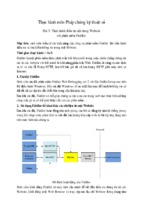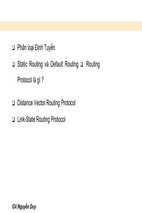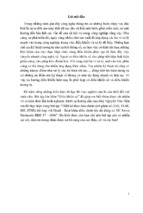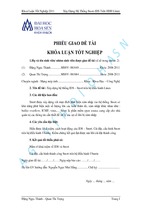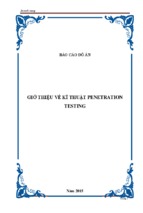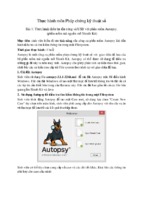452_Google_2e_12.qxd
10/5/07
1:24 PM
Page 511
Protecting Yourself from Google Hackers • Chapter 12
Figure 12.24 GSI Options Screen
Execution is simple as well. Simply fill in the name of the target website, and click Start GSI.
The results will be shown in a hierarchical format as shown in Figure 12.25.
Figure 12.25 GSI Output
511
452_Google_2e_12.qxd
512
10/5/07
1:24 PM
Page 512
Chapter 12 • Protecting Yourself from Google Hackers
Notice that the results are presented in a hierarchical tree that represents the files and directories on the target site. Each link can be clicked on to browse to the appropriate page.
Alternatively you can right-click within Firefox and select GSI. In this case, GSI will
launch with the query filled in based on the selected text, or if no text is selected, GSI will
automatically fill in the name of the current website.
GSI has several options to select from, as shown in Table 12.2.
Table 12.2 GSI Options
GSI Option
Description
Recursive Search
If you choose to use a recursive search, GSI will use inurl
searches. For example, if you choose to do a Google Site
Index on tankedgenius.com. It would first send a query
site:tankedgenius.com. The query would return a result
of http://www.tankedgenius.com/blog/cp/index.html. If a
recursive search is at level is at 1, then it would also send
a query of site:tankedgenius.com inurl:blog. It would
then add the results from that to the index. If the recursion level is set to 2, it would also send a query of
site:tankedgenius.com inurl:cp and get the results.
By default GSI displays an indented site index with only
the directory name showing for each link. If you would
prefer, you can set this option so that it shows the entire
link
Full website names
NOTE
Due to the nature of the Google queries that GSI sends, GSI may get 403
errors from Google. These errors are normal when sending queries with multiple operators.
Advanced Dork
Advanced Dork is an extension for Firefox and Mozilla browsers which provides Google
Advanced Operators for use directly from the right-click context menu. Written by CP, the
tool is available from https://addons.mozilla.org/en-US/firefox/addon/2144.
Like all Firefox extensions, installation is a snap: simply click the link to the .xpi file
from within Firefox and the installation will launch.
452_Google_2e_12.qxd
10/5/07
1:24 PM
Page 513
Protecting Yourself from Google Hackers • Chapter 12
Advanced Dork is context sensitive—Right licking will invoke Advanced Dork based on
where the right-click was performed. For example, right-clicking on a link will invoke linkspecific options as shown in Figure 12.26.
Figure 12.26 Advanced Dork Link Context
Right-clicking on a highlighted text will invoke the highlighted text search mode of
Advanced Dork, as shown in Figure 12.27.
Figure 12.27
513
452_Google_2e_12.qxd
514
10/5/07
1:24 PM
Page 514
Chapter 12 • Protecting Yourself from Google Hackers
This mode will allow you to use the highlighted word in an intitle, inurl, intext, site or ext
search. Several awesome options are available to Advanced Dork, as shown in Figures 12.28
and 12.29.
Figure 12.28
Figure 12.29
Some of these options are explained in Table 12.3.
452_Google_2e_12.qxd
10/5/07
1:24 PM
Page 515
Protecting Yourself from Google Hackers • Chapter 12
Table 12.3 Advanced Dork Options
Option
Descriptions
Highlight Text Functions
Right click to choose from over 15 advanced
Google operators. This function can be disabled in the options menu.
Right click anywhere on a page with no text
selected, and Advanced Dork will focus on the
page’s HTML title and ALT tags for searching
using the intitle and allintext operators, respectively. This function can be disabled in the
options menu.
Right click on a link to choose from site: links
domain, link: this link, and cache: this link. Site:
links domain will only search the domain name,
not the full url.
Right click the URL Bar (Address Bar) and
choose from site, inurl, link, and cache. Inurl
works with the highlighted portion of text
only. Site will only search the domain name,
not the full url.
Right-Click HTML Page Info
Right-Click Links
Right Click URL Bar
Advanced Dork is an amazing tool for any serious Google user.You should definitely
add it to your arsenal.
Getting Help from Google
So far we’ve looked at various ways of checking your site for potential information leaks, but
what can you do if you detect such leaks? First and foremost, you should remove the
offending content from your site.This may be a fairly involved process, but to do it right,
you should always figure out the source of the leak, to ensure that similar leaks don’t happen
in the future. Information leaks don’t just happen; they are the result of some event that
occurred. Figure out the event, resolve it, and you can begin to stem the source of the
problem. Google makes a great Web page available that helps answer some of the most commonly asked questions from a Webmaster’s perspective.The “Google Information for
Webmasters” page, located at www.google.com/webmasters, lists all sorts of answers to commonly asked questions.
Solving the local problem is only half the battle. In some cases, Google has a cached
copy of your information leak just waiting to be picked up by a Google hacker.There are
two ways you can delete a cached version of a page.The first method involves the automatic
URL removal system at http://www.google.com/webmasters/tools/removals.This page,
shown in Figure 12.30, requires that you first verify your e-mail address. Although this
515
452_Google_2e_12.qxd
516
10/5/07
1:24 PM
Page 516
Chapter 12 • Protecting Yourself from Google Hackers
appears to be a login for a Google account, Google accounts don’t seem to provide you
access. In most cases, you will have to reregister, even if you have a Google account.The
exception seems to be Google Groups accounts, which appear to allow access to this page
without a problem.
Figure 12.30 Google’s Automatic URL Removal Tool
The URL removal tool will walk you through a series of questions that will verify your
ownership of the content and determine what it is that you are trying to remove. Each of
the options is fairly self-explanatory, but remember that the responsibility for content
removal rests with you.You should ensure that your content is indeed removed from your
site, and follow up the URL removal process with manual checks.
452_Google_2e_12.qxd
10/5/07
1:24 PM
Page 517
Protecting Yourself from Google Hackers • Chapter 12
Summary
The subject of Web server security is too big for any one book.There are so many varied
requirements combined with so many different types of Web server software, application
software, and operating system software that no one book could do the topic justice.
However, a few general principles can at least help you prevent the devastating effects a
malicious Google hacker could inflict on a site you’re charged with protecting.
First, understand how the Web server software operates in the event of an unexpected
condition. Directory listings, missing index files, and specific error messages can all open up
avenues for offensive information gathering. Robots.txt files, simple password authentication,
and effective use of META tags can help steer Web crawlers away from specific areas of your
site. Although Web data is generally considered public, remember that Google hackers might
take interest in your site if it appears as a result of a malicious Google search. Default pages,
directories and programs can serve as an indicator that there is a low level of technical
know-how behind a site. Servers with this type of default information serve as targets for
hackers. Get a handle on what, exactly; a search engine needs to know about your site to
draw visitors without attracting undue attention as a result of too much exposure. Use any
of the available tools, such as Gooscan, Athena, Wikto, GSI, Google Rower and Advanced
Dork, to help you search Google for your site’s information leaks. If you locate a page that
shouldn’t be public, use Google’s removal tools to flush the page from Google’s database.
Solutions Fast Track
A Good, Solid Security Policy
■
An enforceable, solid security policy should serve as the foundation of any security
effort.
■
Without a policy, your safeguards could be inefficient or unenforceable.
Web Server Safeguards
■
Directory listings, error messages, and misconfigurations can provide too much
information.
■
Robots.txt files and specialized META tags can help direct search engine crawlers
away from specific pages or directories.
■
Password mechanisms, even basic ones, keep crawlers away from protected content.
■
Default pages and settings indicate that a server is not well maintained and can
make that server a target.
517
452_Google_2e_12.qxd
518
10/5/07
1:24 PM
Page 518
Chapter 12 • Protecting Yourself from Google Hackers
Hacking Your Own Site
■
Use the site operator to browse the servers you’re charged with protecting. Keep an
eye out for any pages that don’t belong.
■
Use a tool like Gooscan, Athena, GSI , Google Rower or Advanced Dork to assess
your exposure.These tools do not use the Google API, so be aware that any blatant
abuse or excessive activity could get your IP range cut off from Google.
■
Use a tool like Wikto, which uses the Google API and should free you from fear of
getting shut down.
■
Use the Google Hacking Database to monitor the latest Google hacking queries.
Use the GHDB exports with tools like Gooscan, Athena, or Wikto.
Getting Help from Google
■
Use Google’s Webmaster page for information specifically geared toward
Webmasters.
■
Use Google’s URL removal tools to get sensitive data out of Google’s databases.
Links to Sites
■
http://johnny.ihackstuff.com The home of the Google Hacking Database
(GHDB), the search engine hacking forums, the Gooscan tool, and the GHDB
export files.
■
www.snakeoillabs.com Home of Athena.
■
http://www.seorank.com/robots-tutorial.htm A good tutorial on using the
robots.txt file.
http://googleblog.blogspot.com/2007/02/robots-exclusion-protocol.html
Information about Google’s Robots policy.
http://www.microsoft.com/technet/archive/security/chklist/iis5cl.mspx The IIS
5.0 Security Checklist
http://technet2.microsoft.com/windowsserver/en/library/ace052a0-a713-423e8e8c-4bf198f597b81033.mspx The IIS 6.0 Security Best Practices
http://httpd.apache.org/docs/2.0/misc/security_tips.html Apache Security Tips
document
452_Google_2e_12.qxd
10/5/07
1:24 PM
Page 519
Protecting Yourself from Google Hackers • Chapter 12
www.sensepost.com/research/aura Sensepost’s AURA, which simulates Google
SOAP API calls.
http://www.tankedgenius.com Home of JeffBall and Cp’s GSI and Google Rower
tools.
https://addons.mozilla.org/en-US/firefox/addon/2144 Home of Cp’s Advanced
Dork
Frequently Asked Questions
The following Frequently Asked Questions, answered by the authors of this book, are
designed to both measure your understanding of the concepts presented in
this chapter and to assist you with real-life implementation of these concepts. To have
your questions about this chapter answered by the author, browse to www.
syngress.com/solutions and click on the “Ask the Author” form.
Q: What is the no-cache pragma? Will it keep my pages from caching on Google’s servers?
A: The no-cache pragma is a META tag that can be entered into a document to instruct
the browser not to load the page into the browser’s cache.This does not affect Google’s
caching feature; it is strictly an instruction to a client’s browser. See
www.htmlgoodies.com/beyond/nocache.html for more information.
Q: I’d like to know more about securing Web servers. Can you make any
recommendations?
A:
Q: Can you provide any more details about securing IIS?
A: Microsoft makes available a very nice IIS Security Planning Tool.Try a Google search for
IIS Security Planning Tool. Microsoft also makes available an IIS 5 security checklist;
Google for IIS 5 services checklist. An excellent read pertaining to IIS 6 can be found with
a query like “elements of IIS security”. Also, frequent the IIS Security Center.Try
querying for IIS security center.
Q: Okay, enough about IIS. What about securing Apache servers?
A: Securityfocus.com has a great article, “Securing Apache: Step-by-Step,” available from
www.securityfocus.com/infocus/1694.
519
452_Google_2e_12.qxd
520
10/5/07
1:24 PM
Page 520
Chapter 12 • Protecting Yourself from Google Hackers
Q: Which is the best tool for checking my Google exposure?
A: That’s a tough question, and the answer depends on your needs.The absolute most
through way to check your Web site’s exposure is to use the site operator. A query such
as site:gulftech.org will show you all the pages on gulftech.org that Google knows about.
By looking at each and every page, you’ll absolutely know what Google has on you.
Repeat this process once a week.
If this is too tedious, you’ll need to consider an automation tool. A step above the
site technique is Athena. Athena reads the full contents of the GHDB and allows you to
step through each query, applying a site value to each search.This allows you to step
through the comprehensive list of “bad searches” to see if your site is affected. Athena
does not use the Google API but is not automated in the truest sense of the word.
Gooscan is potentially the biggest Google automation offender when used improperly,
since it is built on the GHDB and will crank through the entire GHDB in fairly short
order. It does not use the Google API, and Google will most certainly notice you using
it in its wide-open configuration.This type of usage is not recommended, since Google
could make for a nasty enemy, but when Gooscan is used with discretion and respect for
the spirit of Google’s no-automation rule, it is a most thorough automated tool.
- Xem thêm -

